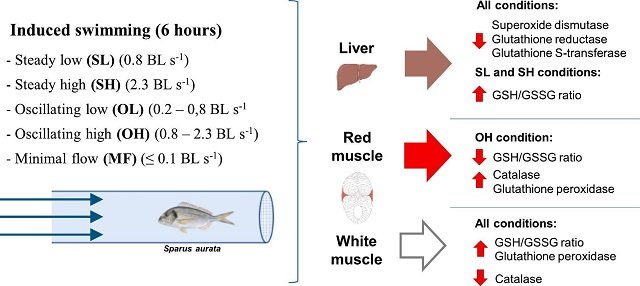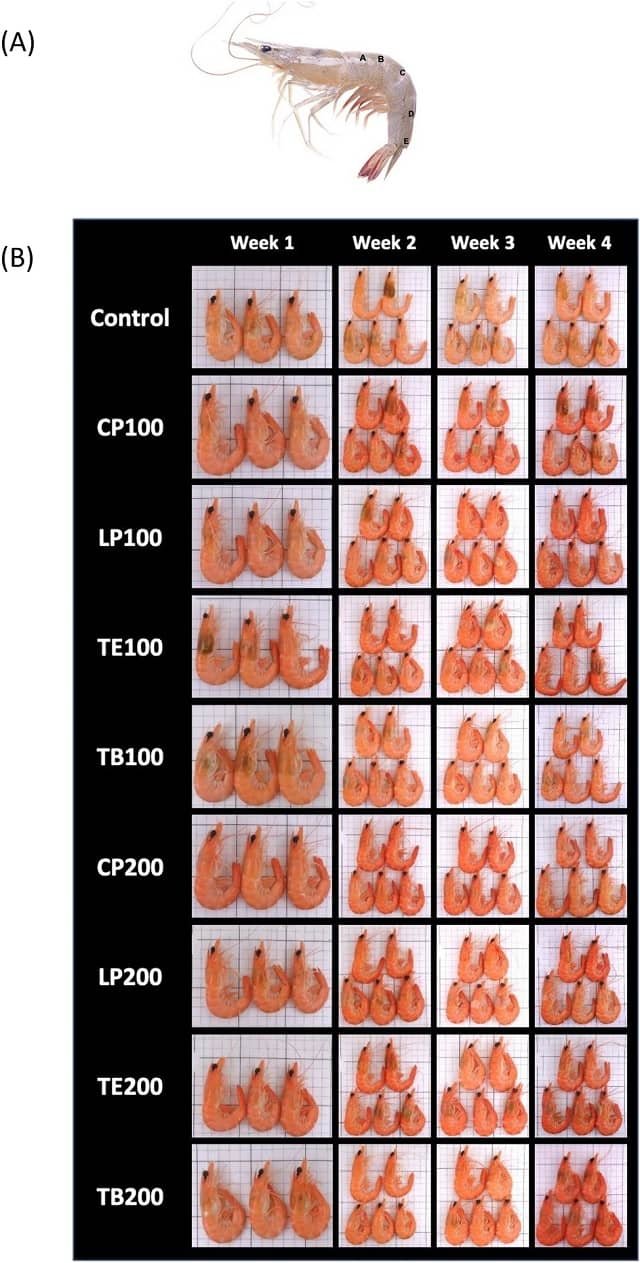
In the aquaculture industry, creating optimal conditions for the health and growth of fish is a constant pursuit. One crucial factor that is often overlooked is water flow and its impact on fish swimming activity. While it is known that swimming induces physiological changes in farmed fish, the impact on oxidative stress has not been well studied.
A recent study published in Comparative Biochemistry and Physiology Part B: Biochemistry and Molecular Biology by scientists from the University of Porto (Portugal), the Interdisciplinary Centre of Marine and Environmental Research (CIIMAR), the University of Murcia, and The New Zealand Institute for Plant and Food Research Limited investigated the effects of different swimming conditions on fish. The study focused on oxidative stress levels in gilthead seabream (Sparus aurata), a popular fish in aquaculture. Oxidative stress is a cellular imbalance that can lead to damage and disease.
Swimming: More Than Just Exercise
For fish, swimming is not just a leisure activity; it is essential for their well-being. Studies have shown that sustained swimming offers a multitude of benefits, including:
- Improved robustness: Fish that exercise regularly are better equipped to face challenges, increasing survival rates.
- Enhanced growth and feed conversion: Exercise stimulates metabolic pathways, promoting the efficient use of food for growth.
- Stress reduction: Swimming provides a natural outlet for stress, a common issue in aquaculture environments.
The Science of Swimming and Fish Health
So, how exactly does swimming translate into better fish health? The answer lies in a complex interaction between exercise, oxygen supply, and the body’s response to cellular stress.
During exercise, fish muscles require more oxygen to function. This triggers a cascade of metabolic changes, including increased activity of enzymes involved in energy production. However, this process can also lead to the production of reactive oxygen species (ROS), molecules that can damage cells if not properly managed.
Balancing the Scale: The Antioxidant Power
Fortunately, fish possess a built-in defense system against ROS damage: antioxidants. These are natural molecules that neutralize free radicals, preventing them from harming cells. The study focused on the activity of key antioxidant enzymes in the liver and muscles of fish subjected to different swimming conditions.
Optimizing Water Flow for Fish Health
The study highlights the importance of understanding the “sweet spot” for water flow. While a little swimming is beneficial, excessive effort can tip the balance and lead to oxidative stress. The researchers propose that providing a water flow that encourages fish to swim at optimal speeds (around 1.5 body lengths per second for juvenile seabream) can maximize the health benefits of exercise.
The Study
The researchers divided the fish into groups that swam at different speeds and patterns for six hours. A control group experienced minimal water flow.
Stay Always Informed
Join our communities to instantly receive the most important news, reports, and analysis from the aquaculture industry.
The study involved dividing the seabream into five groups:
- A non-exercising group with minimal water flow.
- A group that swam at a constant low speed.
- A group that swam at a constant high speed.
- A group that swam at an oscillating low speed.
- A group that swam at an oscillating high speed.
Key Findings
The researchers found that all swimming conditions resulted in lower antioxidant enzyme activities in the liver compared to the control group. However, constant swimming resulted in a higher ratio of reduced glutathione to oxidized glutathione, which is an indicator of antioxidant activity.
The study also found that swimming affected the activities of antioxidant enzymes in different types of muscle tissue. In red muscle, oscillating swimming increased lipid peroxidation and antioxidant enzyme activity, while constant swimming increased reduced glutathione. In white muscle, oscillating swimming decreased the activity of some antioxidant enzymes but increased the activity of others. The ratio of reduced to oxidized glutathione increased in white muscle under all swimming conditions.
Implications for the Aquaculture Industry
These findings suggest that exercise can be beneficial for fish health, but the type and intensity of exercise are important. Constant swimming appears to be the most beneficial type of exercise for reducing oxidative stress in gilthead seabream.
In this sense, understanding the link between swimming and fish health has far-reaching implications for aquaculture practices. By designing tanks with water flow that promotes healthy swimming patterns, fish farmers can create a more natural and beneficial environment for their fish. This can lead to better fish welfare, improved growth rates, and ultimately, a more sustainable aquaculture industry.
Conclusion
This study is important for the aquaculture industry as it can help improve the health and well-being of farmed fish. By providing fish with appropriate swimming conditions, fish farmers can help reduce oxidative stress and improve the overall health of their fish.
Future research could explore optimal swimming conditions for different fish species and life stages. Additionally, researchers could investigate the impact of swimming on other aspects of fish health, such as growth and immune function.
The study was partially funded by FCT – Foundation for Science and Technology (Portugal).
Contact
Carlos Espírito-Santo
Faculty of Sciences, University of Porto
Rua, 14 do Campo Alegre, 4069-007 Porto, Portugal.
Email: carlos.esanto91@gmail.com
Reference (open access)
Espírito-Santo, C., Alburquerque, C., Guardiola, F. A., Ozório, R. O., & Magnoni, L. J. (2024). Induced swimming modified the antioxidant status of gilthead seabream (Sparus aurata). Comparative Biochemistry and Physiology Part B: Biochemistry and Molecular Biology, 269, 110893. https://doi.org/10.1016/j.cbpb.2023.110893
Editor at the digital magazine AquaHoy. He holds a degree in Aquaculture Biology from the National University of Santa (UNS) and a Master’s degree in Science and Innovation Management from the Polytechnic University of Valencia, with postgraduate diplomas in Business Innovation and Innovation Management. He possesses extensive experience in the aquaculture and fisheries sector, having led the Fisheries Innovation Unit of the National Program for Innovation in Fisheries and Aquaculture (PNIPA). He has served as a senior consultant in technology watch, an innovation project formulator and advisor, and a lecturer at UNS. He is a member of the Peruvian College of Biologists and was recognized by the World Aquaculture Society (WAS) in 2016 for his contribution to aquaculture.




